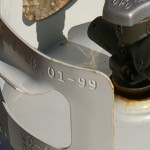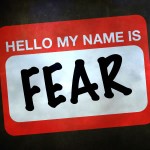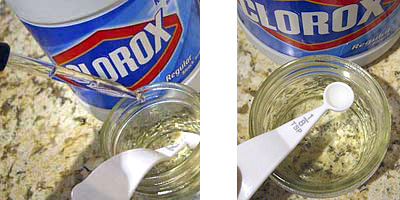By Ken (MSB) | From ModernSurvivalBlog.com | On Saturday, February 16th, 2013
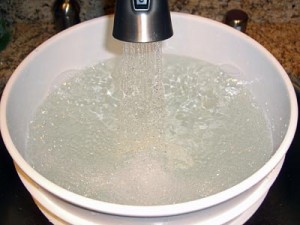 Emergency water storage should be a survival preparedness priority BEFORE you think about storing food.
Emergency water storage should be a survival preparedness priority BEFORE you think about storing food.
We cannot survive without water for more than a few days, and rarely as long as one week.
The human body is approximately 60 percent water by weight. Not only do we get our water from what we drink but also from the foods that we eat and the way that we prepare them.
We can survive much longer without food than water. 3 weeks is an often referred number when asked this question, or as long as 6 to 8 weeks with attributing favorable factors such as remaining hydrated with water, climate, etc.
Because we will not survive a week without it, this is why it is so important to build a water storage supply first, BEFORE you think about food storage.
Survival Storage of Safe Drinking Water
A minimum storage recommendation is one gallon of water per person, per day. That’s 30 gallons for two weeks supplying two people. This may or may not be an adequate storage reserve depending on your proximity to a non-municipal fresh water source. If you live near a pond, spring, river or lake, you could haul water in a 5-gallon bucket on a wagon, and then filter and/or boil it for drinking or add to your reserves.
There are specific designed containers that are safe for drinking water storage, available in all sorts and sizes. An important consideration is the fact that water is heavy, and weighs about 8 pounds per gallon. You’re going to have trouble handling and moving containers that are exceeding 5-gallons (40 pounds).
An example of one solution to water storage is the use of ordinary 5-gallon buckets, but with one caveat… they should be ‘food grade’.
This five gallon food grade bucket, could be used with a convenient Gamma seal lid that screws on and off easily. The overall cost of this solution may be less than purchasing a specific water storage container, heavy duty enough to be adequate for long term storage.
When looking for a food grade bucket, look for a label (usually on the bottom) that reads HDPE #2.
Important: All food grade buckets are made of HDPE #2 (high density polyethylene) but not all HDPE #2 buckets are food grade. Buckets that are not food grade will slowly out-gas and leach into the container, to whatever is in the container.
HDPE #2 buckets that are not food grade will have been manufactured with a non-food-grade “mold release agent”.
A mold release agent is what is used to help get the newly shaped plastic off of the hard mold that it was shaped from during the manufacturing process. Without the release agent, during the manufacturing process the plastic will stick to the mold. Some mold release agents enable much faster production than others, but may be toxic to your health if later used with food and the like.
If the bucket is marked specifically as food grade or USDA approved (or FDA or NSF approved), then it is food grade. Otherwise contact the supplier or manufacturer to confirm.
How to store water for an emergency
First, be sure the storage container is CLEAN. Disinfect it if necessary by using a solution of 1 tablespoon of regular bleach added to one gallon of water. Clean and dump out the excess.
If filling the container with tap water, it will typically contain about 1 ppm (parts per million) of chlorine, which technically is adequate to ensure that bacteria germs and other organisms have been neutralized.
You can sample the chlorine level in your water by using a swimming pool chlorine test kit.
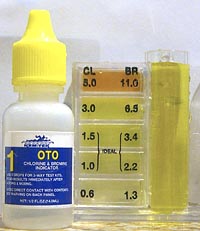
An ideal chlorine level for water storage is from 1 to 3 ppm. Without it, the water will be at risk to develop or grow bacteria or other unhealthy organisms.
My experience to boost 5 gallons of tap water containing 1 ppm chlorine to 3 ppm was to add 3 one-eighth teaspoons of regular household bleach (no additives, 5 or 6% sodium hypochlorite). One-eighth teaspoon is equivalent to 16 drops in this case.
Start by adding one-eighth teaspoon of bleach to the five gallon bucket of storage water, mix (stir), then measure the chlorine level (with a chlorine test kit). Add more as necessary to achieve your desired level (2 to 3 ppm). Once you discover the total quantity needed, the rest is simple. Just add that same quantity to all subsequent buckets.
5 gallon buckets can be conveniently stacked. Keep them in a darkened environment, away from direct sunlight and heat, so as to prevent growth of algae, etc.
Chlorine will breakdown over time (especially if exposed to sunlight), but so long as you started with purified water in a sealed container stored properly, it should be in good shape for 6 months to a year. Not that it will go ‘bad’, but it is advisable to renew and replace your water storage every six months to a year.
—
This article was originally posted at http://modernsurvivalblog.com/health/survival-water-storage/






